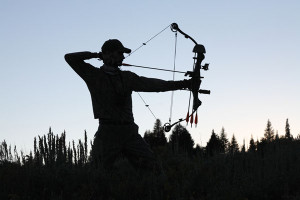Dealing Failure in Hunting
Whenever you fall, pick something up. –Oswald Avery
If you are following this blog, then I apologize for my absence. My last post was over a month ago. Work obligations are somewhat to blame, but more than that, it’s been my lack of inspiration following a long and difficult hunting season.
When the general season ended with no new venison in the freezer, I was somewhat perplexed. What did I do wrong? Going in, I was convinced I’d unlocked the secret to bagging big bucks. But try as I might, I couldn’t do it. Immediately following the hunt, I felt deflated and uninspired. Five weeks later, I’m just starting to realize that failure is exactly what I needed to keep my ego in check. How can a person ever fully understand big bucks in the first place? It’s impossible. They are brilliant, highly adaptable survivors!
All told, I spent 13 days hunting hard all over my prescribed unit, but never drew my bow on a buck. At the same time, I could have shot at least a dozen small bucks–mostly 2- and 3-points–but I was holding out for a trophy. This is what caused me so much grief. No matter how much ground I covered, and no matter how high I went, I was disappointed by the low numbers of mature bucks. I knew I could find them if they existed, but they were almost non-existent. Of the 50+ bucks I saw, only two were mature bucks in the 170-180″ class range; barely trophies in my book. Long story short, these bucks were either inaccessible or the stalk failed for one reason or another. Either way, the problem is with how few big deer there are anymore.
In observing so many deer in the wild, I was blown away by the sheer brilliance of the modern mule deer and the ways in which it’s adapted to avoid modern hunters. Their survival tactics seem well thought out and highly effective. For instance, some of the largest bucks would keep does between them and the timberline as a sort of security fence. Basically, a bowhunter would have to get through a string of does to get to the bucks, making it nearly impossible to hunt them. This and many other evasive tactics were documented and will be covered in my next blog-post.
So the hunt was a failure, but only because I failed to provide meat for my family. At the same time, the hunt was a huge success. The countless hours spent sitting alone in nature, watching sunrises and sunsets, creeping through the dark timber, and observing innumerable animals going about their business–all these things stirred my soul and rejuvenated my being. Life’s daily problems and stresses melted away. I saw the hand of God through all his creations, and all questions about the purpose of life were answered.
Fortunately the hunt isn’t over yet. The extended hunt began where the general season ended. Now, the extended hunt can be extremely difficult due to high hunting pressure, dry and noisy leaves on the ground, and the low numbers of scattered deer. At the same time, the odds go up when the snow flies and pushes big bucks down from the high country and concentrates them on the lower elevation windswept slopes. This occurs in mid-November, and that’s where my hunt will resume.
Yes, I failed to harvest a deer, but the season isn’t over yet. I still have an unused deer tag and an elk tag in my pocket, and I will succeed in providing meat for my family. I have learned humility through failure. I have found my inspiration and I’m full of hope. I still believe in Zen hunting, and through the process of Zen hunting, success is still a decision.






